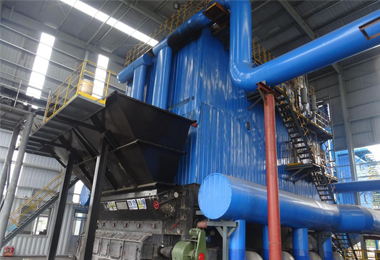
ديسمبر . 18, 2024 02:14 Back to list
how does a coal fired boiler work
How Does a Coal-Fired Boiler Work?
Coal-fired boilers are significant players in the energy production landscape, especially in regions where coal is abundant and cost-effective. Understanding how a coal-fired boiler works involves delving into its design, operation process, and the chemistry that underpins combustion. This article will explore the mechanics of a coal-fired boiler, its components, and its environmental considerations.
Basic Design and Components
A coal-fired boiler primarily consists of a furnace, heat exchanger, and various auxiliary components intended to enhance efficiency and reduce emissions. The main components include
1. Furnace This is where the combustion of coal takes place. The boiler's design allows for a controlled environment where coal and air can mix effectively. 2. Burner The burner atomizes the coal, breaking it into small particles to facilitate efficient combustion. This can involve using either amechanical or pneumatic system for coal feeding and mixing.
3. Superheater After the combustion of coal, the flue gases pass through a superheater that increases the temperature of the steam produced, enhancing its energy content.
4. Economizer This component recovers residual heat from the flue gases, which preheats the feedwater before it enters the boiler. This increase in temperature leads to improved overall efficiency.
5. Electrostatic Precipitator (ESP) This device is crucial for controlling emissions. It captures particulate matter from the flue gases before they are released into the atmosphere.
6. Boiler Drum The drum is where steam and water are separated. It also acts as a reservoir for water, maintaining the necessary levels for efficient operation.
The Process of Coal Combustion
The operation of a coal-fired boiler can be understood in a sequential manner
how does a coal fired boiler work

1. Coal Feeding Coal is delivered to the boiler and is either stored in a bunker or a direct-feed system. The burner then feeds coal into the furnace, where it is prepared for combustion.
2. Combustion Once in the furnace, air is introduced to the coal. Coal combustion is a highly exothermic reaction that transforms the carbon in the coal into carbon dioxide, releasing significant amounts of heat. The heat generated raises the temperature of the water circulating through the pipes of the boiler.
3. Steam Generation As water is heated to its boiling point, it turns into steam, which is then collected in the boiler drum. The pressure in the drum increases, and the steam is channeled to a turbine or other equipment for energy production.
4. Heat Recovery The flue gases generated from combustion contain excess heat, which is not only lost if not recovered. The economizer captures some of this heat to preheat incoming water, improving overall energy efficiency.
5. Emission Control Before the exhaust gases are released into the atmosphere, they pass through the ESP, which removes particulates and meets environmental regulations.
Environmental Considerations
While coal-fired boilers are efficient and cost-effective, they have significant environmental impacts, primarily concerning air quality. The combustion of coal emits sulfur dioxide (SO₂), nitrogen oxides (NOₓ), and volatile organic compounds (VOCs), which contribute to acid rain and smog. Additionally, the CO₂ produced during combustion contributes to climate change.
To mitigate these impacts, modern coal-fired boilers are equipped with advanced emission control technologies. Flue gas desulfurization systems can remove SO₂, while selective catalytic reduction (SCR) reduces NOₓ emissions. Furthermore, regulatory bodies impose stricter limits on emissions, prompting industries to invest in cleaner technologies or alternative energy sources.
Conclusion
Coal-fired boilers play a crucial role in energy generation across the globe, especially in industrial applications. Understanding their operation—from coal combustion to steam generation—is essential for optimizing performance and addressing environmental concerns. As we move toward sustainable energy solutions, the challenge lies in balancing energy needs with ecological responsibility, ensuring that coal remains a viable energy source in a greener future.
-
Efficient Biomass Fired Hot Water Boiler | AI Heating Solution
NewsAug.01,2025
-
High-Efficiency Gas Thermal Oil Boilers | HPT Models
NewsJul.31,2025
-
Oil Fired Hot Water Boilers Sale - High Efficiency & Affordable
NewsJul.31,2025
-
High-Efficiency Commercial Oil Fired Steam Boiler for Industry
NewsJul.30,2025
-
High-Efficiency Biomass Fired Thermal Oil Boiler Solutions
NewsJul.30,2025
-
High Efficiency Gas Fired Thermal Oil Boiler for Industrial Heating
NewsJul.29,2025
Related PRODUCTS






















